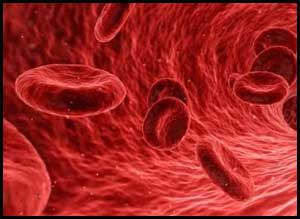- Home
- Editorial
- News
- Practice Guidelines
- Anesthesiology Guidelines
- Cancer Guidelines
- Cardiac Sciences Guidelines
- Critical Care Guidelines
- Dentistry Guidelines
- Dermatology Guidelines
- Diabetes and Endo Guidelines
- Diagnostics Guidelines
- ENT Guidelines
- Featured Practice Guidelines
- Gastroenterology Guidelines
- Geriatrics Guidelines
- Medicine Guidelines
- Nephrology Guidelines
- Neurosciences Guidelines
- Obs and Gynae Guidelines
- Ophthalmology Guidelines
- Orthopaedics Guidelines
- Paediatrics Guidelines
- Psychiatry Guidelines
- Pulmonology Guidelines
- Radiology Guidelines
- Surgery Guidelines
- Urology Guidelines
Methemoglobinemia caused by Benzocaine Spray: Case Report

A rare case of methemoglobinemia caused by benzocaine appeared in the Journal of Hematology. The case was reported by Dr. Prashanth Rawla at Department of Internal Medicine, Monmouth Medical Center, Long Branch, NJ, USA, and colleagues. The case appeared in the Journal of Hematology.
Benzocaine, a topical anesthetic agent, is widely used during short procedures like endoscopy, endotracheal intubation and likewise. The authors present a case of benzocaine spray-induced methemoglobinemia in an adult male patient during the transesophageal echocardiography (TEE) presenting as hypoxia and improved subsequently in the next 2 h on low-dose intravenous methylene blue.
A 44-year-old gentleman came to the emergency room (ER) with complaints of weakness and physical deconditioning for 2 days. He is a diagnosed patient with type I diabetes mellitus, peptic ulcer disease, depression, seizure disorder, Charcot foot of the left foot and a mild developmental delay. The patient was prescribed insulin detemir, escitalopram, Depakote, clonazepam, gabapentin, levetiracetam, lisinopril and finasteride for his various co-morbidities. He had a history of non-compliance with medications and also a history of previous hospital admissions for diabetic ketoacidosis (DKA). He was also diagnosed with substance abuse with tobacco with seven pack-years of smoking in the last 15 years. He also consumes alcohol five units per week and occasional use of marijuana for the past 15 years.
In the ER, the patient was diagnosed to have DKA and acute kidney injury (AKI) secondary to drug-induced acute tubular necrosis (ATN) along with dehydration and hyperkalemia. Therefore, he was treated with intravenous (IV) fluids and an insulin infusion and his DKA resolved.
As a routine workup to rule out the exacerbating factors of DKA, a blood culture was done which came positive for methicillin-susceptible Staphylococcus aureus (MSSA). He was initially started on vancomycin and renal adjusted dose of piperacillin/tazobactam. However, due to persistent positive blood cultures with MSSA, he was taken up for further evaluation. Meanwhile, the patient had a chronic fracture of his left humerus proximally with a non-union for 1 year. An orthopedic consultation was sought for as his range of movements was limited. A computerized tomography (CT) scan of the upper extremity was performed which confirmed the non-union and also reported osteomyelitis. Large septated fluid collections in the subcutaneous soft tissues and muscles of the shoulder and the entire left arm suggesting seromas related to old hemorrhage were also reported in the CT. However, since radiologically an infection could not be ruled out, an incision and drainage were done and drains were placed. The culture of the fluid drained also grew MSSA.
As the patient had septicemia and a localized abscess, a cardiac transthoracic echo was done to rule out vegetations on the heart valves. He was further subjected to TEE which was performed by the cardiologist who confirmed the absence of any vegetations. During the TEE benzocaine and lidocaine were used as a topical anesthetic agent. During the entire procedure, the patient had persistent hypoxemia with his oxygen saturation staying between 85% and 87% on 100% non-rebreather mask. An arterial blood gas revealed pH 7.43, PCO2 41, PO2 249, and oxygen saturation 85%. He did not show any signs of cyanosis. The arterial blood color was not noted. Chest X-ray was done and showed no abnormalities. CT angiogram of the chest was gone which showed no evidence of pulmonary embolism. A probable diagnosis of methemoglobinemia was considered. Methemoglobin level checked using co-oximetry during the procedure was 28.6% initially. He was treated with one dose of methylene blue 2 mg/kg IV, and 2 h later his oxygen saturation was found to be maintained at 92-94% on 2 L oxygen via nasal cannula. His repeat methemoglobin levels were 8.2%. Subsequently, his hypoxia got better, and he maintained good saturation after that on room air. His repeat blood cultures sent 2 days after abscess draining and came back negative. His medical condition improved and he was discharged on IV antibiotics to a skilled nursing facility.
For more details click on the link: doi.org/10.14740/jh325w

Disclaimer: This site is primarily intended for healthcare professionals. Any content/information on this website does not replace the advice of medical and/or health professionals and should not be construed as medical/diagnostic advice/endorsement or prescription. Use of this site is subject to our terms of use, privacy policy, advertisement policy. © 2020 Minerva Medical Treatment Pvt Ltd